Ultima X: Odyssey Designer Diary #3
What will it be like to step into battle in the next Ultima game? Designer Jonathan Hanna explains.
Traditionally, role-playing games (RPGs) have let players assume the roles of noble knights or space-age technologists who fight monsters and solve quests to both gain experience levels and acquire vast treasures. In recent years, they've incorporated online multiplayer, even going so far as to be "massively multiplayer," which allows thousands of players to adventure online with one another in persistent worlds. One of the earliest of these massively multiplayer games was Ultima Online, which was inspired by Origin's now-classic Ultima role-playing series. The next game in the series, Ultima X: Odyssey, will continue the adventures of the series' famous paragon of virtue, the Avatar, and the series' infamous villain, the Guardian. However, it will also attempt to remedy issues that are common to online RPGs in general. In this designer diary, designer Jonathan Hanna explains how you'll fight your battles in the game.
The Quest to Make a Game Like No Other, Part One
By Jonathan "Calandryll" HannaLead Designer, Origin Systems
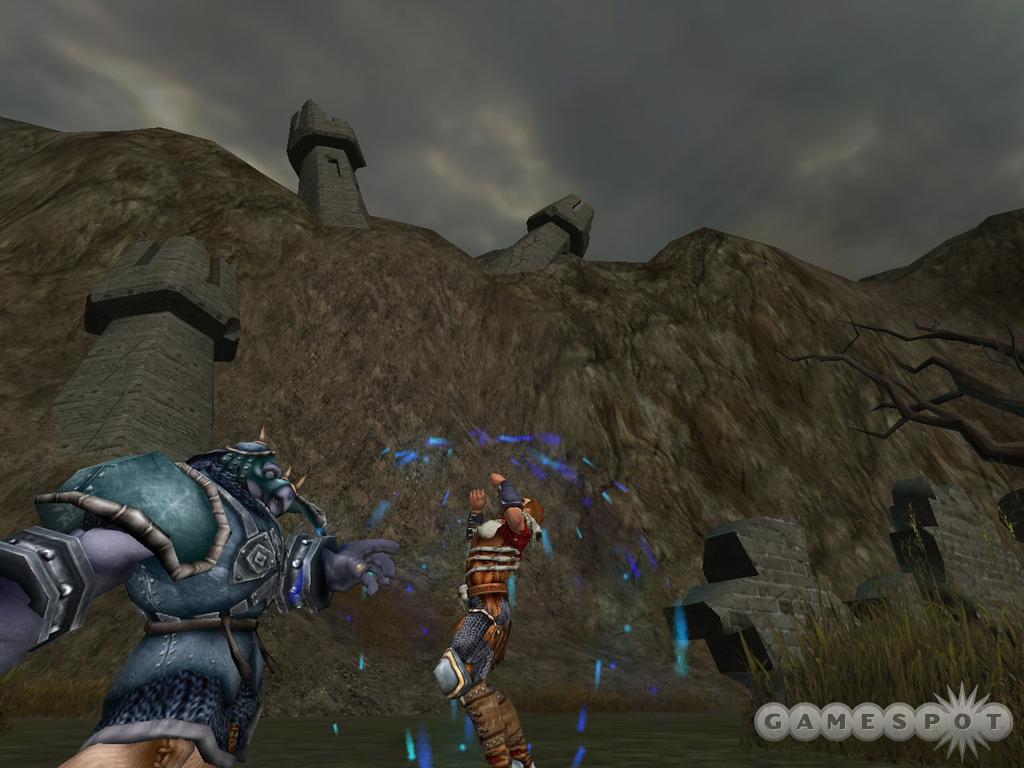
In the first two diaries, we talked a lot about the ideas behind creating Ultima X: Odyssey (UXO), such as focusing on fun gameplay, reducing downtime, and removing tedium. For the next two diaries, I'd like to talk about the two core elements of UXO that these ideas have helped us create. UXO focuses on strategic combat and grand adventuring--two features that have consistently been lacking in massively multiplayer games. In this diary, we'll focus on UXO's combat.
When designing combat, we set our main focus on creating something that allowed for real strategy. We looked at 3D fighting games, action-oriented role-playing games, and just about every other kind of game that we felt had cool combat. We purposely didn't look at other massively multiplayer games because we genuinely felt that most of them have taken a step backward with regard to combat. The focus of these games is so strongly skewed toward creating an online social experiment--or a "virtual sandbox"--that core elements like combat are implemented almost as an afterthought. Most of these games have turn-based combat that makes you feel very disconnected from your character, as he or she automatically attacks monsters, thus requiring only occasional input from you. We refer to this as "sandwich combat." That is, this is combat that requires so little interaction and is so repetitive and predictable that you could almost start a fight and then go into the kitchen and get a sandwich--returning later to get your loot from the kill. It's funny, in a way, when you consider that so many games that supposedly focus on letting you "be" a persona actually give you so little control over your character's choices in combat. We set out to change that.
You can read about the components of combat on the official UXO site, but I'll give a quick overview before continuing. In UXO, you control every sword swing, every block, and every spell. You have a variety of ways to engage an opponent, including standard attacks that damage your target and allow your character to gain momentum, special abilities that include powerful melee attacks and awe-inspiring spells, and abilities that allow you to defend against your opponent's attacks. These components can be used in different ways, so you have a tremendous number of options. But these components alone do not create strategy or tactics. In order to achieve this, your opponents must behave in different ways and perform actions that require appropriate reactions from you. This is where monster artificial intelligence (AI) is important when creating a fun combat system.
In most massively multiplayer games, monsters have very simplistic AI. They may bring allies into a fight, cast spells, and switch targets based on who attacked them last, but that's pretty much it. Most fights work something like this:
-Someone attacks a monster
-It brings some friends
-Someone stuns all but one of the monsters
-Everyone gangs up on one monster, being sure not to hit the others
-Once that monster is dead, everyone switches to the next target
-Repeat and until all monsters are dead
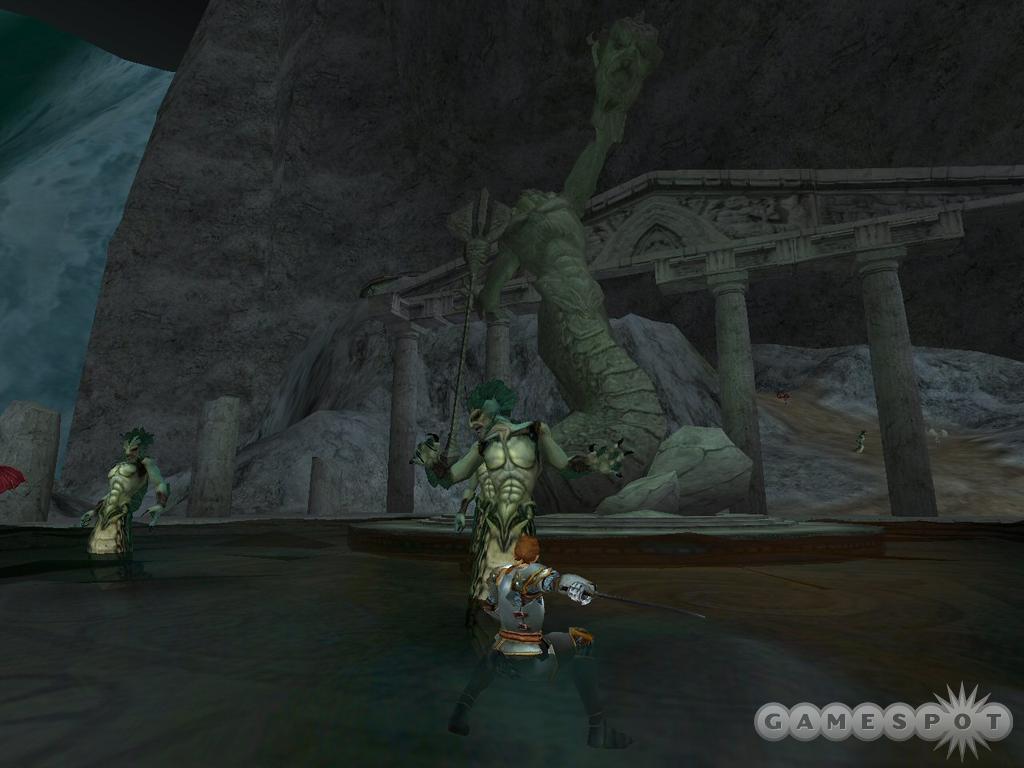
This is not real strategy because each fight becomes an identical routine. And in most cases, if you deviate from these steps, the party dies. Think about the scene in The Fellowship of the Ring where the heroes are fighting the orcs and the cave troll. Imagine if--instead of the exciting and heart-pounding melee portrayed in the film--Gandalf just stunned all of the orcs, and the fellowship killed each monster, one at a time, while the other orcs just stood there doing nothing. It would make for a pretty boring battle scene, wouldn't it? It also happens to make for some very dull and repetitive gameplay.
Roll up Your Sleeves
Most monsters in these other games don't try to counter this tactic, which leaves it as the only way to win every single fight. It's sort of like playing a football game where there is only one play, and it scores a touchdown 99 percent of the time. It would get boring pretty fast. It is this lack of strategy and forced repetition that creates the infamous "treadmill" that is commonly featured in online games. Well, no more. 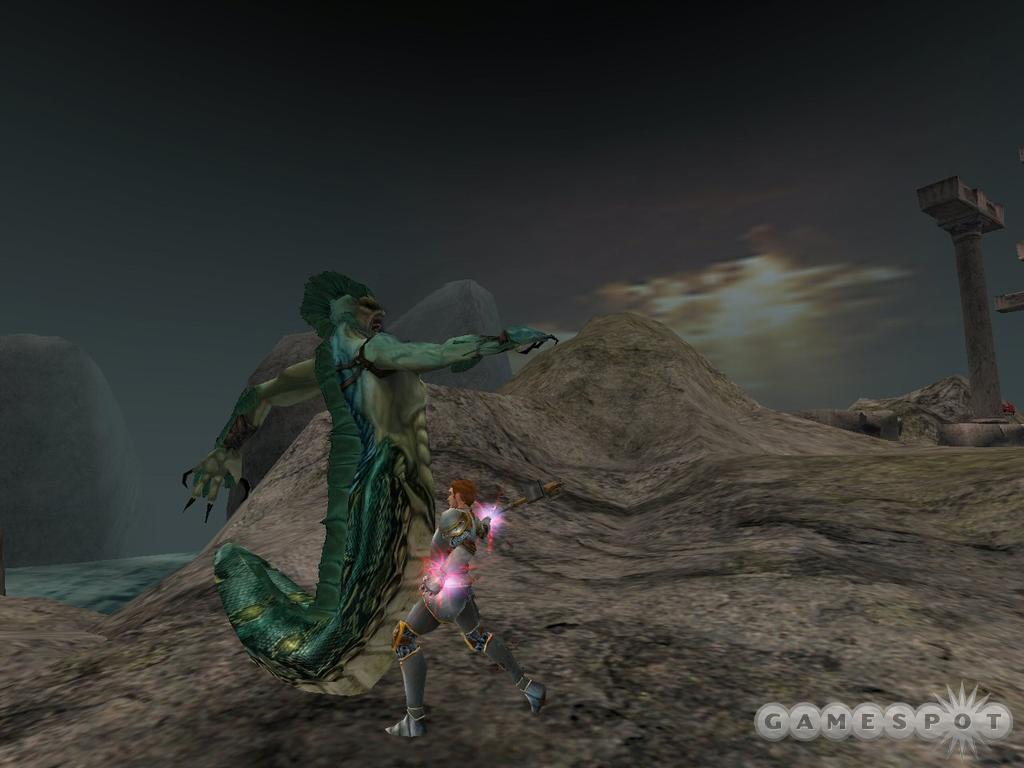
First of all, we've done away with long-term stunlike spells. We did this for a few reasons. They take away from real strategy (as explained above), they are horribly overpowered, and they represent the antithesis of heroism. Heroes don't stun a group of monsters and then calmly dispatch them one at a time. Real heroes wade into the fight, take on foes even when they are outnumbered, and change their tactics on the fly in order to crush their enemies and support their comrades.
We also made the monsters much smarter. All of the components of combat don't mean anything if you don't get to combine them in interesting and fun ways. To give you an idea of how the monster AI creates the need for strategy and tactics in combat, here's an example of how a fight in UXO might progress.
Let's say you decide to travel to the Barren Plains to fight rhinorks. You know that rhinorks travel in groups that contain both melee warriors and enemies who can cast magic spells, and they are adept at group tactics. The warriors can stun opponents with their heavy stone hammers, while the spellcasters use both healing and protective "buff" spells. So you find some friends to travel with you and arm yourselves with spells that can nullify the rhinorks' protective magic. You also bring your shield along to help you block the rhinorks' melee stun attacks. The barbarian in the party agrees to attack any rhinork spellcaster who casts healing spells, and one of your mages takes on the role of watching over your warriors and stabilizing them before they die, should one fall in battle.
You're wandering through the plains with your party, and you're wearing heavy plate mail armor, which is noisy. A rhinork hears the racket and decides to investigate. If you had a ranger in your party who used his stealth ability (or if the plate mail had magical properties to it that reduced its noise), you might have been able to sneak up on the rhinork before it heard or saw you. But in this case, while investigating the noise, it moves into visual range and sees you. Immediately, the territorial creature attacks and calls three of its friends to help. Monsters call for help based on your party size, thus bringing more of their kin into a fight depending on how many people threaten it. More rhinorks approach by heeding their comrade's call. Two of the rhinorks are warriors, so they wade into melee and attack you and your comrades. The other two rhinorks are spellcasters who stay out of melee range and begin casting attack spells.
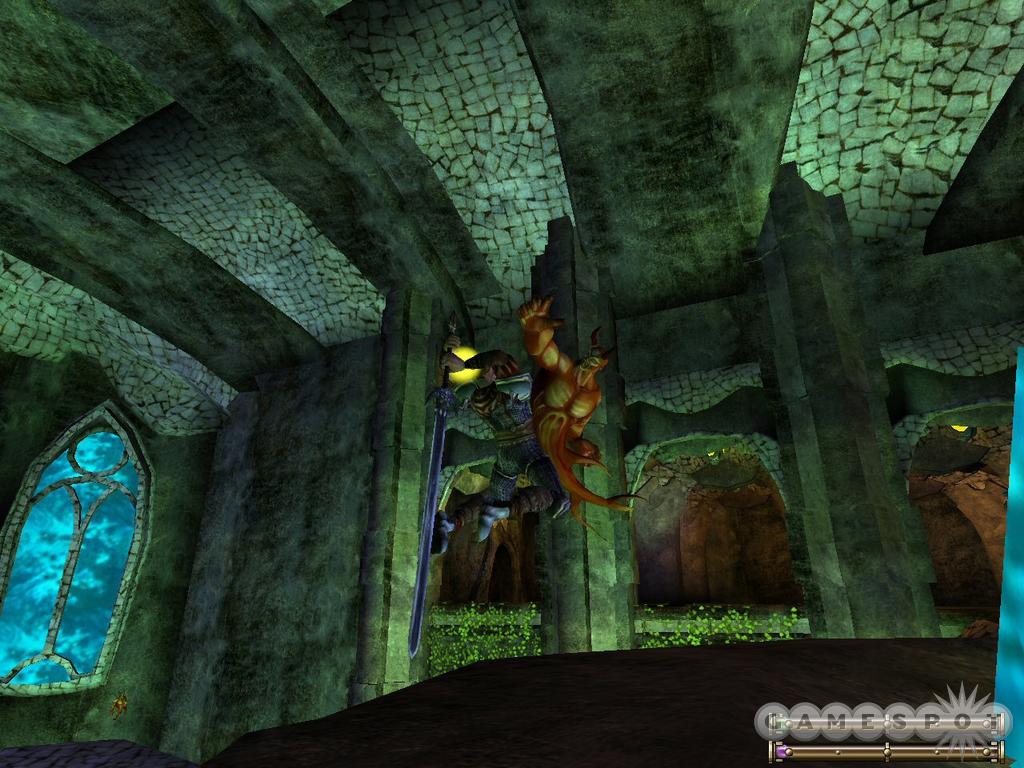
You manage to get the attention of both rhinork warriors. You can gain a bonus to your chance to hit by attacking more slowly, but these rhinork warriors have low defenses, so you decide to attack as quickly as you can. Seeing this attack, one of the rhinork mages casts a defensive spell on the rhinork warriors. Now you either need to slow down your attacks and aim more carefully or have someone remove that spell. One of your mages casts a spell that dispels your enemy's protection, and the warriors are once again able to attack at a fast pace.
After a bit, one of the melee rhinorks is heavily wounded, consequently causing a rhinork spellcaster to start healing it. Your barbarian friend moves to attack the healing rhinork, thus attempting to force the creature's attention on to himself. Noticing this, the other rhinork warrior breaks away from you to assist the spellcasting rhinork. Before it can get there, one of your mages casts a short-term stun, which--while it may not last long--might give the warrior a chance to kill the rhinork wizard.
The Fight Is On
The barbarian notices that his attacks aren't hitting as often as they were against the rhinork warrior, and he realizes that when the rhinork mage cast the defensive spell earlier, it also cast one on itself. Again, the players either have to dispel the rhinork's protective magic or change their tactics and wait between attacks to get an attack bonus that will help them gain the upper hand. This time, your spellcasting allies can't spare a moment to dispel the rhinork's spell. It's actually a relatively fragile monster, so the barbarian attacks more slowly, subsequently gaining a bonus to hit and scoring enough hits to kill it outright before the rhinork warrior's stun wears off. Had the barbarian not slowed his attacks, he wouldn't have been able to kill the enemy spellcaster before the enemy warrior attacked him--because the barbarian's attacks wouldn't have hit often enough.
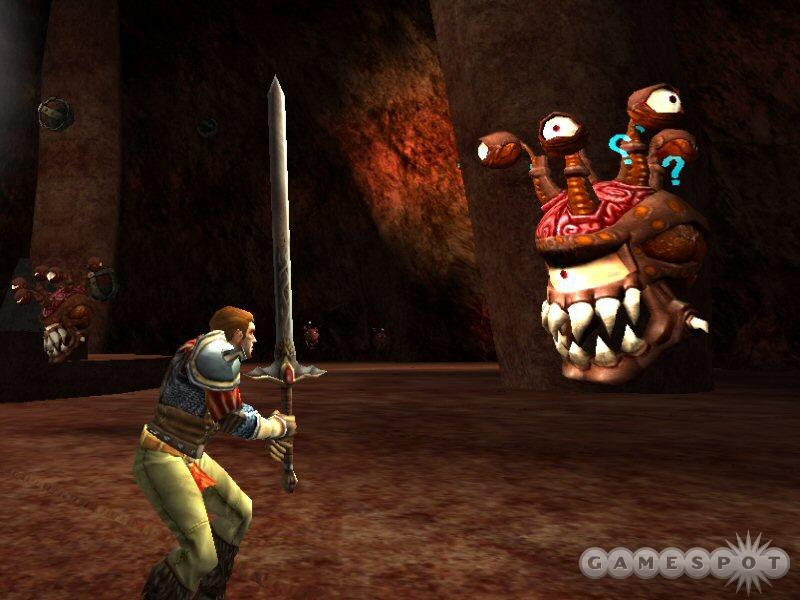
Suddenly, you notice that the rhinork warrior attacking you begins to perform his own stun attack. Knowing that being stunned would cause your party to be at a serious disadvantage, you switch to a defensive posture by giving up your attacks in an attempt to block the rhinork's stunning blow. Despite the defensive bonus you get from carrying a shield, the rhinork scores a lucky hit, and you are temporarily stunned. Unlike other games where the monster just keeps attacking (thus immediately breaking the stun), the rhinork is smart enough to know that you are no longer a threat. It switches targets and attacks someone else while leaving you unable to move or act. This rhinork now turns its attention to the rest of your party, including the relatively fragile spellcasting wizard who, despite also going into a defensive stance (to block the rhinork's attacks), is knocked unconscious before the barbarian can get the rhinork off of him. The mage isn't dead yet, but he's helpless, so it won't be long until the blackness overtakes him.
The mage who is responsible for watching for fallen allies has the virtue ability "bond of spirituality" and immediately moves to stabilize her friend. But the rhinork warrior who was attacking the fallen mage notices this and moves to attack the would-be healer. Seeing this, the barbarian uses his "battle challenge" ability to gain the attention of the monster again. The barbarian now has two monsters on him. So for his next move, he chooses an ability that inflicts confusion, which causes one of the Rhinorks to attack with less efficiency. It buys him enough time to survive while the healer helps the fallen mage. The stabilization attempt is successful, and the mage returns to life--wounded but otherwise ready to do battle. They move to help the barbarian before the confused rhinork regains his senses. Finally, you recover from the stun, and the battle continues. And, of course, all of this action is complemented by very cool-looking particle effects and animations, incredible sound effects, and inspiring music.
This is just one example of how the monsters will react to your actions and how you will need to react to theirs. Different groups of monsters won't always do the same things, which means you'll need to develop different strategies based on the monsters' tendencies and the abilities of your characters. For example, gnolls are a different type of monster that tend to have high natural defenses and don't rely on defensive spells the way rhinorks do. So in the above example, the players' strategy wouldn't have worked. You can't lower a gnoll's defense with magical dispel abilities because its defense isn't a result of magic. Players would have to arm themselves with weapons that provide a bonus to hit, or they could bring their own defense-lowering "debuff" spells to lower the gnolls' natural defenses. Gnolls also attack in packs, so having one character draw the attention of an entire group of gnolls would lead to that character's demise very quickly. The players might also want to use more attacks that can affect an area, and they need to keep the gnolls from ganging up on one character.
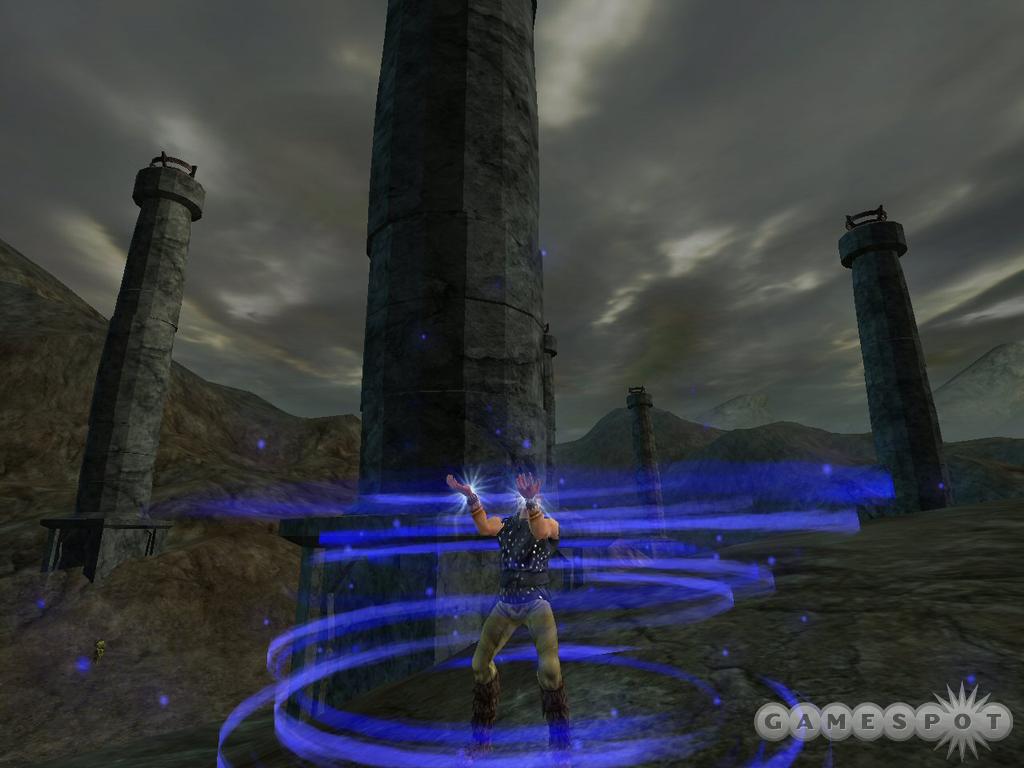
As you play the game and chat with other players, you'll learn which strategies work best against the different monsters. Some monsters will support one another more than others; some will focus on different party members, depending on their roles in the fight (thus probably attacking healers or trying to take out your warriors first); some will be more resistant or vulnerable to certain types of attacks; and all monsters will have a variety of abilities and tendencies that you'll need to counter in order to be victorious. Part of the fun will be figuring out which strategies and tactics work and which ones don't. But once you have a strategy you like, don't become too complacent, because even the same type of monster may throw you a curveball once in a while.
Now killing monsters is all well and good, but it's even better when there is a point to fighting beyond just leveling up and getting loot. In the next diary, we'll talk about UXO's questing system and how we use it to create a truly unique adventuring experience.
Got a news tip or want to contact us directly? Email news@gamespot.com
Join the conversation